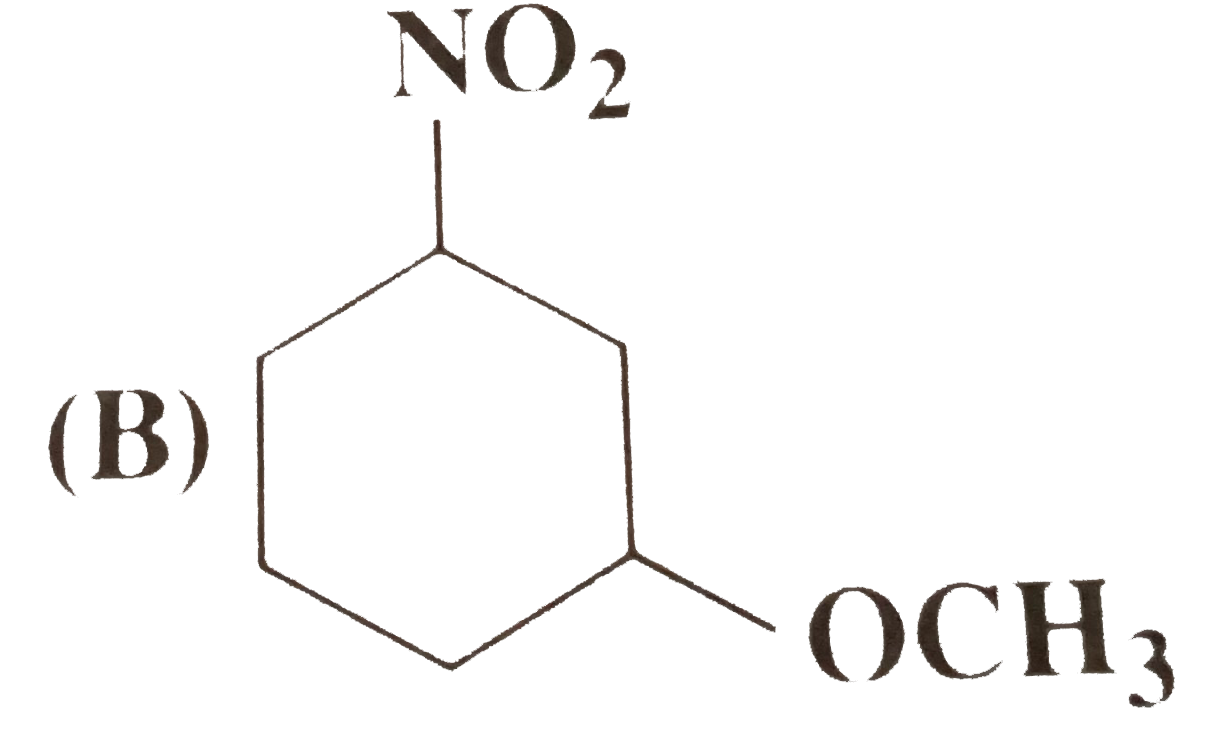Complete Solutions to SHORT ANSWER TYPE QUESTIONS of chapter ETHERS of Class 12 book with complete answers and questions
| Class 12 | CHEMISTRY |
| Chapter | ETHERS |
| DINESH COMPANION CHEMISTRY | SHORT ANSWER TYPE QUESTIONS |
| Number Of Questions | 35 |
| Academic Year | 2023-24 |
What is the structure and IUPAC name of glycerol?
View SolutionWrite the IUPAC name of the following compounds.
(A) `CH_(3)-underset(CH_(3))underset(|)(CH)-underset(OH)underset(|)(CH)-underset(C_(2)H_(5))underset(|)(CH)-underset(OH)underset(|)(CH)-CH_(3)` (B)
View SolutionWrite the IUPAC name of the compound given below.
`CH_(3)-CH_(2)-underset(CH_(3))underset(|)(C)=underset(CH_(2)OH)underset(|)(C)-OH`
View SolutionName the factors responsible for the solubility of alcohols in water .
View SolutionSuggest a reagent for the following conversion

View SolutionWhat is denatured alcohol ?
View SolutionOut of 2-chloroethanol and ethanol which is more acidic and why ?
View Solutionsuggest a reagent for the conversion of ehanol to ethanal.
View SolutionSuggest a reagent for conversion of ethanol to ethanoic acid.
View SolutionOut of o-nitrophenol and p-nitrophenol, which is more volatile ? Explain?
View SolutionOut of o-nitrophenol and o-cresol which is more acidic ?
View SolutionWhen phenol is treated with bromine water, white precipitate is obtained. Give the structure and the name of the compound formed.
View SolutionArrange the given compouns in decreasing order of acidity and give a suitable explanation, Phenol, o-nitrophenol, o-cresol
View SolutionAlcohols react with active metals e.g., Na, K etc., to give corresponding alkoxides. Write down the decreasing order of reactivity of sodium metal towards primary, secondary and tertiary alcohols.
View SolutionWhat happens when benzene diazonium chloride is heated with water ?
View SolutionArrange the following compounds in decreasing order of acidity.
`H_(2)O, ROH, HC -= CH`
View SolutionName the enzymes and write the reactions involved in the preparation of ethanol from sucrose by fermentation.
View SolutionHow can propan-2-one be converted into tert-butyl alcohol ?
View SolutionWrite the structures of the isomers of alcohols with molecular formula `C_(4)H_(10)O` Which of these exhibits optical acitvity ?
View SolutionExplain why is OH group in phenols more strongly held as compared to OH group in alcohols ?
View SolutionExplain why nucleophilic substitution reactions rae not very common in phenols.
View SolutionPreparation of alcohols from alkenes involves the electrophilic attack on alkene carbon atom. Explain its mechanism.
View SolutionExplain why is O=C=O non polar while R-O-R is polar ?
View SolutionWhy is the reactivity of all the three classes of alcohols with conc. HCl and `ZnCl_(2)` (Lucas reagent) different ?
View SolutionWrite steps to carry out the conversion of phenol to aspirin.
View SolutionNitration is an example of aromatic electrophilic substitution and its rate depends upon the group already present in the benzene ring. Out of benzene and phenol, which one is more easily nitrated and why ?
View SolutionIn Kolbe's reactio insteaded of phenol, phenoxide ion is treated with carbon dioxide. Why ?
View SolutionDipole moment of phenol is smaller than that of methanol. Why ?
View SolutionEthers can be prepared by Williamson synthesis in which an alkyl halide is reacted with sodium alkoxide. Di-tert-buty ether can't be prepared by this method. Explain
View SolutionWhy is the `C-O-H` bond angle in alcohols slightly less than the tetrahedral angle whereas the C-O-C bond angle in ether is slightly greater?
View SolutionExplain why low molecular mass alcohols are soluble in water ?
View SolutionExplain why p-nitrophenol is more acidic than phenol ?
View SolutionExplain why alcohols and ethers of comparable molecular mass have different boiling points?
View SolutionThe carbon-oxygen bond in phenol is slightly stronger than that in methanol. Why ?
View SolutionArrange water, ethanol and phenol in increasing order of acidity and give reason for your answer.
View Solution
SHORT ANSWER TYPE QUESTIONS questions and complete solutions for chapter ETHERS of S DINESH & CO CHEMISTRY (HINGLISH) of Class 12
All Exercises from DINESH COMPANION CHEMISTRY Class 12 CHEMISTRY ETHERS
- (MCQs)
- ADDITIONAL IMPORTANT QUESTIONS
- ASSERTION -REASON TYPE QUESTIONS
- ASSIGNMENT
- ASSSERTION -REASON TYPE QUESTIONS
- Example
- HIGHER ORDER THINKING SKILLS (HOTS) QUESTIONS
- INTEGER ANSWER TYPE QUESTIONS
- JEE (MAIN) & OTHER ENGINEERING ENTRANCE EXAMINATIONS
- LONG ANSWER TYPE QUESTIONS
- MATCHING TYPE QUESTIONS
- MULTIPLE CHOICE (MCQB)
- MULTIPLE CHOICE QUESTIONS (TYPE-I)
- MULTIPLE CHOICE QUESTIONS (TYPE-II)
- N.C.E.R.T. EXERCISE
- N.C.E.R.T. IN TEXT QUESTIONS
- PROPERTIES OF ETHERS
- QUESTIONS FROM BOARD EXAMINATIONS
- SHORT ANSWER TYPE QUESTIONS